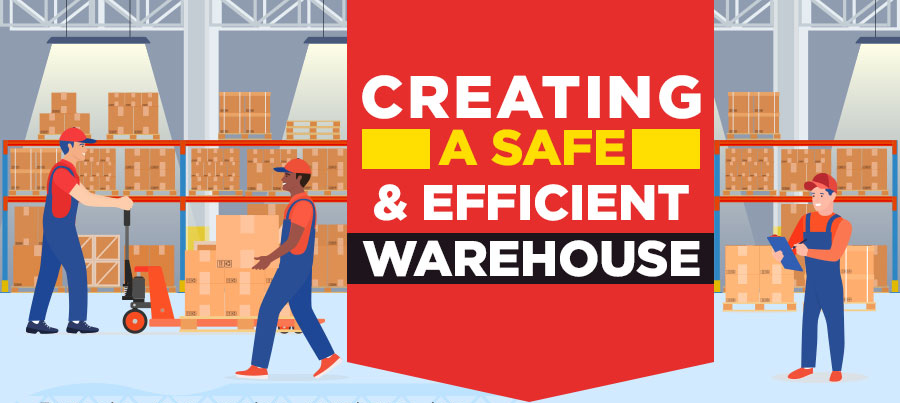
A Guide to Creating a Safe and Efficient Warehouse (infographic)
Given that powerful equipment and trucks frequently operate close to one another, warehousing is one of the riskier industries. Rapid growth in e-commerce is driving an ever-increasing demand for the delivery of products in shorter time frames. Industrial and commercial warehouses must meet this demand while maintaining the present standards for safety.
There are thousands of reports of injuries, illnesses, and deaths in the warehousing industry annually. Many of those are the result of industrial mishaps such as slips and falls, exposure to dangerous products, and defective equipment. Warehouse safety should be the employers’ utmost priority to keep employees safe, ensure efficient operation, maximize productivity, and minimize injury or damage.
Best Practices for an Efficient Warehouse
Preventive Maintenance
The majority of occupational dangers can be avoided by taking the following precautions:
- Recruitment & Training
- Safety Equipment & Precautions
- Hygiene & Pest Control
Planned Maintenance
Periodic maintenance can minimize equipment downtime and reduce maintenance costs. The fundamental maintenance advice listed below should be adhered to in order to maintain your warehouse operating at maximum capacity:
- Have A Maintenance Plan
- Stay Vigilant
- Ask Employees For Their Opinion
By regularly monitoring your warehouse equipment, spares, and procedures, and promoting the well-being of your personnel, you’ll not only increase the productivity of your warehouse, but you’ll also cut your losses if there’s an emergency or an accident. Make sure your warehouse is as secure as it can be by working with your staff.
The infographic below by 2Flow takes a look at ‘Creating A Safe & Efficient Warehouse’.
[click to enlarge]
If you need help with creating a safe and efficient warehouse in your facility, contact us today.






